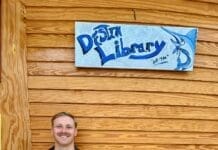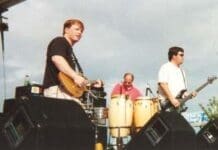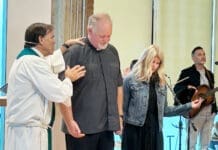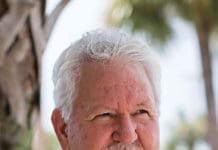By Michael Yoder, Retired FBI Criminal Profiler
One of the most under-rated investigative techniques – but highly effective – is to canvass an area when a person is missing and murder is strongly suspected. The concept is to identify the perimeters of a neighborhood and then put that neighborhood under a dome of law enforcement supervision. Ideally, all entry and exit points are to be monitored until law enforcement checks the inner perimeter.
The neighborhood canvass and the roadblock canvass are two types of canvassing that work in tandem. The neighborhood canvass consists of several two-person law enforcement teams, armed with a customized questionnaire, and tasked to visit each residence in the neighborhood. The purpose of each team is to identify every person that resides in that household. All individuals eligible for interview complete the questionnaire as required by law enforcement authorities.
The customized questionnaire consists of questions to determine identifiers such as name and date of birth, and to determine if the resident has any knowledge about the missing person. This could be as simple as a resident noting odd actions or behaviors in someone close to the missing person, or a car that seemed out of place. The questionnaire can also be to identify transient occupants such as overnight visitors, commercial or construction workers in the area, or even late party goers. Finally, the questions can help uncover anything out of the ordinary that occurred around the time of the disappearance.
The key to an effective and thorough neighborhood canvass is to assign a strict supervisor to oversee the operation. The supervisor inspects each team’s results for thorough completion. If a listed resident was not interviewed, the team must return to interview everyone. Only when this occurs AND the residence is searched should the canvass supervisor accept the results of the team’s efforts. The supervisor should read the answers to the questionnaire to note oddities and then can report final completion of the neighborhood canvass to the chain of command.
The purpose of a cursory search, which is conducted concurrently with the questionnaire, is to perform a visual inspection of all areas within a residence that could potentially serve as locations for concealing a body. When a murder occurs, how to dispose of a dead body can be problematic, especially if the neighborhood is swarming with law enforcement during a well conducted canvass. The offender may try to avoid a search or wait out the heat of the initial actions of law enforcement, hoping they will leave. However, if law enforcement is thorough, the body will be discovered.
The roadblock canvass happens once law enforcement has identified all entrance/exit points in an area of interest. As vehicles leave or enter, officers request consent to search the vehicle. They can also use a modified questionnaire to determine if the occupants are permanent or temporary residents or are in the neighborhood for work.
The canvass method is intrusive to the occupants of the neighborhood. However, if law enforcement can explain that the purpose of the canvass is to find the victim and to solve a major crime, most people will be understanding and gracious. Most people abhor the thought of violent crimes in their neighborhood and want to cooperate with the police to solve these crimes.
For law enforcement, the thought of being on a canvass team sounds boring and rote. After all, they will be spending their time talking to innocent people who have no idea what occurred. However, a thorough and professional attitude towards accomplishing this seemingly dull directive gives the investigator valuable information as they rule out theories and focus on finding the victim and ultimately a killer.
If you are requested to respond to an inquiry from neighborhood canvassing teams, please be aware that your cooperation contributes to the effectiveness of law enforcement investigations. Your honest responses and openness to allow your residence to be searched may lead to solving a violent crime. Failure to cooperate may allow a murderer to remain at large and in your neighborhood.
I have personally witnessed the effectiveness of thorough canvassing operations. I have also witnessed information received during a canvass leading directly to the discovery of the victim and the identity of the killer. It works!
If you’re interested in true crime and want to learn sleuthing skills, join our Facebook group, Destin True Crime Club. We meet monthly to research a real cold case and brainstorm next steps. It’s a serious yet fun group of passionate case-solvers. For questions or to request a talk on violent crime issues, email me at myoder0361@gmail.com.





























































